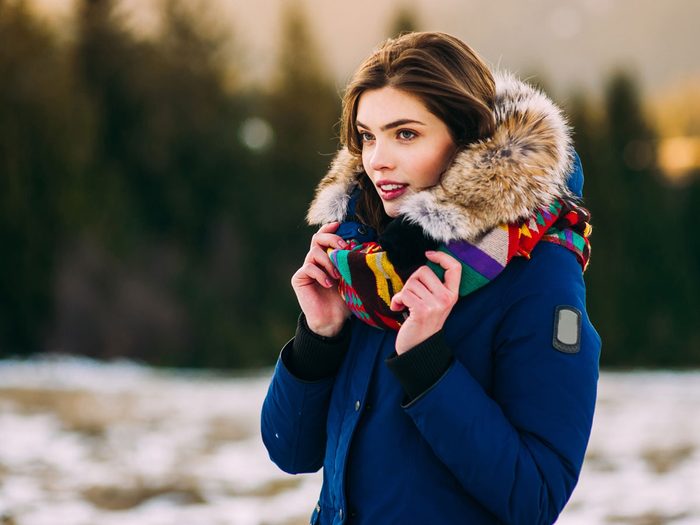
Winter Beauty Woe #1: Dry Skin 24/7
Whether it’s the feeling of subtle tightness or the development of a visible flaky patch, dry skin is officially trending. And with 30 percent of Canadian women only buying moisturizer once a year (!) there’s room for improvement.

The Dry Skin Fix:
Moisturizer is a basic beauty necessity, but the best winter moisturizer for you is one you love to use. Like, all season long. “The heaviness of a moisturizer isn’t necessarily a great indication of how well it moisturizes, it comes down to do you feel and see it working for your skin?” says Dr. Frauke Neuser, Olay principal scientist, “If you use it twice a day and your skin feels great, then stick with it. But if every day at 1 p.m. your skin starts to feel tight then it’s probably not the right one for you, it may be about playing around with some other textures.” Keeping skin hydrated is also part of the long game that is aging gracefully. “We can see that if hydration is not ideal over time it can have a long-term effect. I don’t think that’s something that people think about: your skin will age less well because of the hydration you don’t give it,” says Dr. Neuser. It’s true, and it’s just one of the ways that you age faster in winter.
Not sure how to find a fit? Check out the Olay Skin Advisor tool. You’re only a snap and click away from receiving a personal skin diagnostic and product recommendations.

Winter Beauty Woe #2: Split Ends City, Population: You
Your selfie isn’t playing tricks on you, one cold snap and your hair can suddenly adopt a straw-like texture. “In the lab, we see that when you crank the humidity and temperature levels down the formation of split ends goes up,” says Dr. Jeni Thomas, principal scientist for Pantene. As the oldest part of a strand, the ends of hair are chronologically prone to display damage since they’ve been exposed to daily stressors, like styling and colour, and seasonal changes the longest. (Yep, your hair has been trying to tell you it’s stressed!) With the depletion of the natural protective coating of a hair and the inner breakdown of connective proteins it all starts to come apart. “A split end is simply an unravelling of that end, and that leads to a rough, dry feel,” says Dr. Thomas.
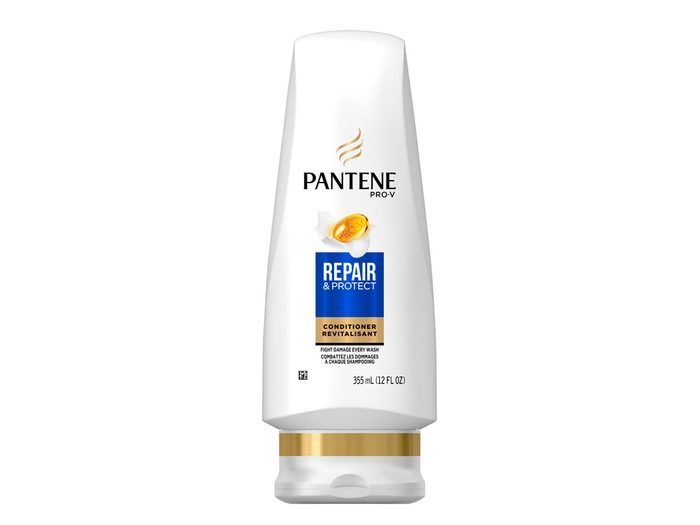
The Split Ends Fix:
Trim first, condition second. “Your best cure is prevention in this case. Using a conditioner is very important because you’re looking to have stronger hair so that you never get to the point of unravelling,” says Dr. Thomas. When it comes to choosing a winter hair care product, an antioxidant-rich blend will help strengthen the natural keratin structure of hair and reduce split ends from forming. Here’s more on how to reduce hair breakage in winter.
Pantene Pro-V Repair and Protect Conditioner, $9, pantene.ca

Winter Beauty Woe #3: Skin that’s Always Irritated
Does the cold weather make your skin have zero chill? If you’re experiencing redness, itching or bumps (for starters), you’re not alone. “If you do a big survey, 50-60 percent of people say they have sensitive skin,” says Dr. Neuser, “We do see a higher incidence of sensitive skin in the winter and that’s very much related to dryness. Drier air equals drier skin. And that can make symptoms of sensitive skin even worse.”
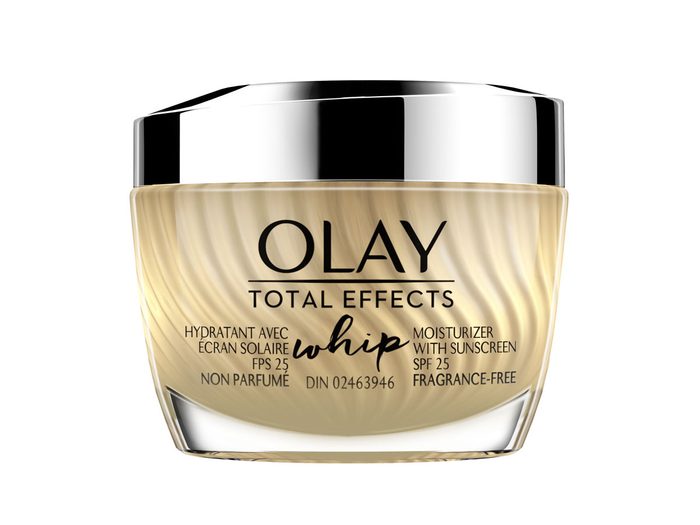
The Irritated Skin Fix:
A simple approach to skin care, plus a hard pass on anything scented, is the formula to soothing a delicate epidermis. “Sensitive skin is a very individual feeling, with different signs and symptoms for every individual, but what a dermatologist will tell you is to avoid fragrance in any products that touch the skin,” says Dr. Neuser. To avoid triggering sensitivities, streamline your beauty routine by looking for a hardworking fragrance-free moisturizer that’s built to address multiple skin concerns and provide sun protection.
Olay Total Effects Whip Moisturizer SPF 25 Fragrance-Free, $40, olay.ca

Winter Beauty Woe #4: The Dreaded Hat Head
If you’re among the 60 percent of Canadian women who will avoid wearing a hat even in extreme winter conditions for fear of a bad hair day, you know the struggle is real. “Hat head is not one size fits all, but it’s universally very frustrating,” says Dr. Thomas, who lists frizz and flattening as top complaints. The biggest trouble-maker isn’t the accessory itself. “You have the battle between two different environments. Underneath the hat, that for all your hair knows might as well be in the Bahamas because it’s nice and toasty – and might be humid because you’re sweating. And then the bottom half of your hair is exposed to Antarctica, where it’s super cold and dry,” she says.
Skipping a hat isn’t one of the top hair sins, but maybe it should be!

The Hat Head Fix:
You’re just one small step from entering a world of cute toques and embracing our legendary season, while avoiding its inherent inconsistencies. And, spoiler alert, the game-changer awaits in your shower thanks to a few key winter hair care products. “A conditioner helps your hair be less at the whim of the environment around it and hold onto more balanced moisture,” says Dr. Thomas, “If you start off with well-conditioned hair, before you put the hat on, it’s not going to respond as quickly to what’s happening up top or down below. The hair is also less resistant to creating that crease, the telltale sign of hat head.” Static cling, which can be caused by anything that creates friction on hair, including collars, hoods and scarves, will also be reduced. For best results, you’ll have to apply conditioner from roots to ends. The latest formulas are designed to melt into hair, nourishing it from within and rinsing away easily with no heavy residue left behind.
Feeling an urge to scratch? First, find out why your scalp is so itchy.
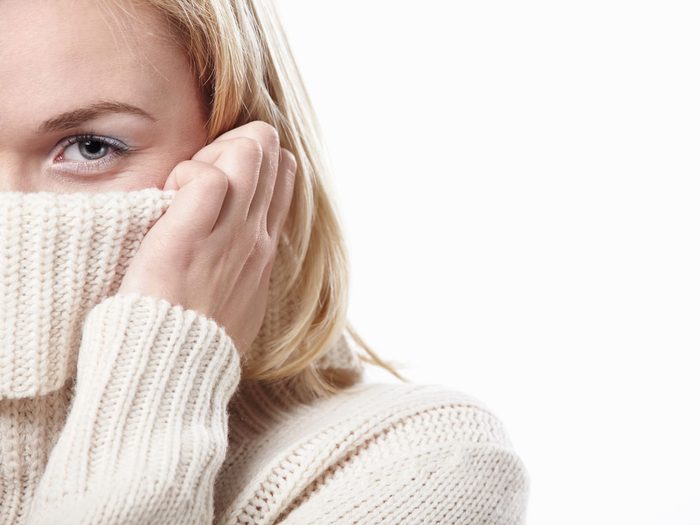
Winter Beauty Woe #5: Your Fine Lines are Lit
Do not adjust your eyes: the most annoying signs of aging (hello, fine lines and wrinkles) come to light under winter skies. On a quest to learn more about skin across seasons and whether dryness leads to visible changes in the skin, Dr. Neuser and her team recently completed a year-long study of ten women in Cincinnati, Ohio, using weekly images and measurements. “From December to February, the fine lines and wrinkles got worst and most of that has to do with dryness. (Although, in some cases, your wrinkles might be trying to tell you something about your health.) We expected that as soon as it got warmer the skin would bounce back, and it did to some amount. But in the winter skin suffers more and the care you don’t give it in those months you won’t recover from, so the next year it starts at a lower baseline with more fine lines and wrinkles,” she says.
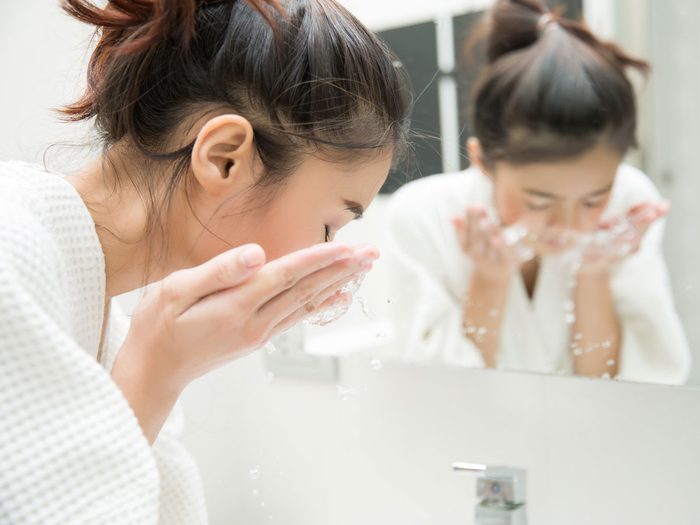
The Fine Line Fix:
Seek out ingredients that work overtime, like Dr. Neuser’s go-to called niacinamide. “It is a water-soluble form of Vitamin B3, which stands out because it boosts production of very important proteins and lipids that are sitting in the outer layer of your skin. It helps skin help itself to be better protected against fluctuations in humidity and hold on to hydration much better,” she says. Also, consider treatment products to address specific concerns. “The skin under the eyes is the driest skin on your face. If you don’t usually use an eye cream, now is the time to start. That extra care and attention can make a big difference,” she says, “The drier your skin, the more fine lines and wrinkles you will form – but there’s always something you can do about it.”
Next, discover 12 things dermatologists do in the winter that you don’t.
